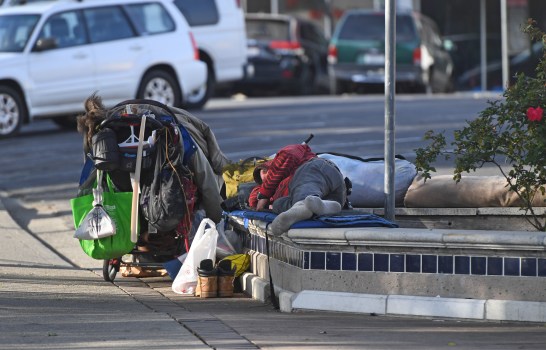Contra Costa County’s homeless population jumped 19% from last year, even as local officials added hundreds of homeless housing units and shelter beds.
The county’s latest annual “point-in-time” homeless count — conducted by a team of volunteers on a single morning this past January — identified 2,843 people, according to newly released data. Almost 70% were living outdoors, in vehicles or in other places not meant for habitation. The rest were in shelters.
The surge came despite a 26% increase in the county’s supportive housing and shelter capacity to more than 3,500 beds, underscoring the challenge of moving people off the streets as fast as rising housing costs, job losses, and mental health and addiction issues force others out.
County officials said it was difficult to pinpoint the exact reasons for the spike in homelessness, but in a statement added: “What we do know that contributes to homelessness in Contra Costa County is the lack of affordable housing here in the Bay Area and in the state.”
Last month, neighboring Alameda County reported its homeless population dipped by 3% from 2022 to 9,450 people, though Oakland’s population swelled by 9%. San Francisco, meanwhile, saw its number of homeless residents rise 7% to more than 8,300. San Mateo County tallied 2,130 homeless people, an 18% increase.
Unlike Contra Costa County, which counts annually, those counties conduct their tallies every two years. Santa Clara County, which took its census in 2023, will not count again until 2025. Its homeless population was nearly 10,000.
While widely seen as an undercount, the estimates are crucial to helping cities and counties plan their homelessness response and determine how much state and federal homelessness funding they can expect to receive. The federal government had been a much larger funder of local homelessness programs, but the state has dramatically increased its homelessness spending over the past decade.
Despite unprecedented billions of dollars put toward stemming the crisis, jurisdictions across California have seen homelessness explode in recent years. In Contra Costa County, where the typical apartment rent now tops $2,400, the homeless population has soared 77% since 2017.
According to the latest count, homelessness increased 31% in the eastern part of the county, and declined 2% in the central county and 24% in the western county.
Antioch, in the eastern county, had the largest homeless population at 413, a 24% rise from 2023. Meanwhile, in the western county, Richmond, which previously had the most homeless residents, saw its unhoused population fall 22% to 388.
County officials attributed the decline in Richmond in large part to the city winning state grants to clear encampments and move homeless people into shelters or housing.
“We found that communities that take advantage of available state funding to leverage opportunities for creating new housing and developing services for people who are homeless or at risk of homelessness tended to improve in the count,” officials said.
Black people were overrepresented in the count, making up a third of homeless residents while accounting for only about 10% of the county’s overall population — a reflection of longstanding racial inequities nationwide. The count also identified 190 homeless children, 54 of whom were unsheltered.
A survey of a portion of the homeless population found that 61% reported having a mental health condition, 59% had a substance use disorder, 49% had a chronic health condition and 49% had a physical disability.



